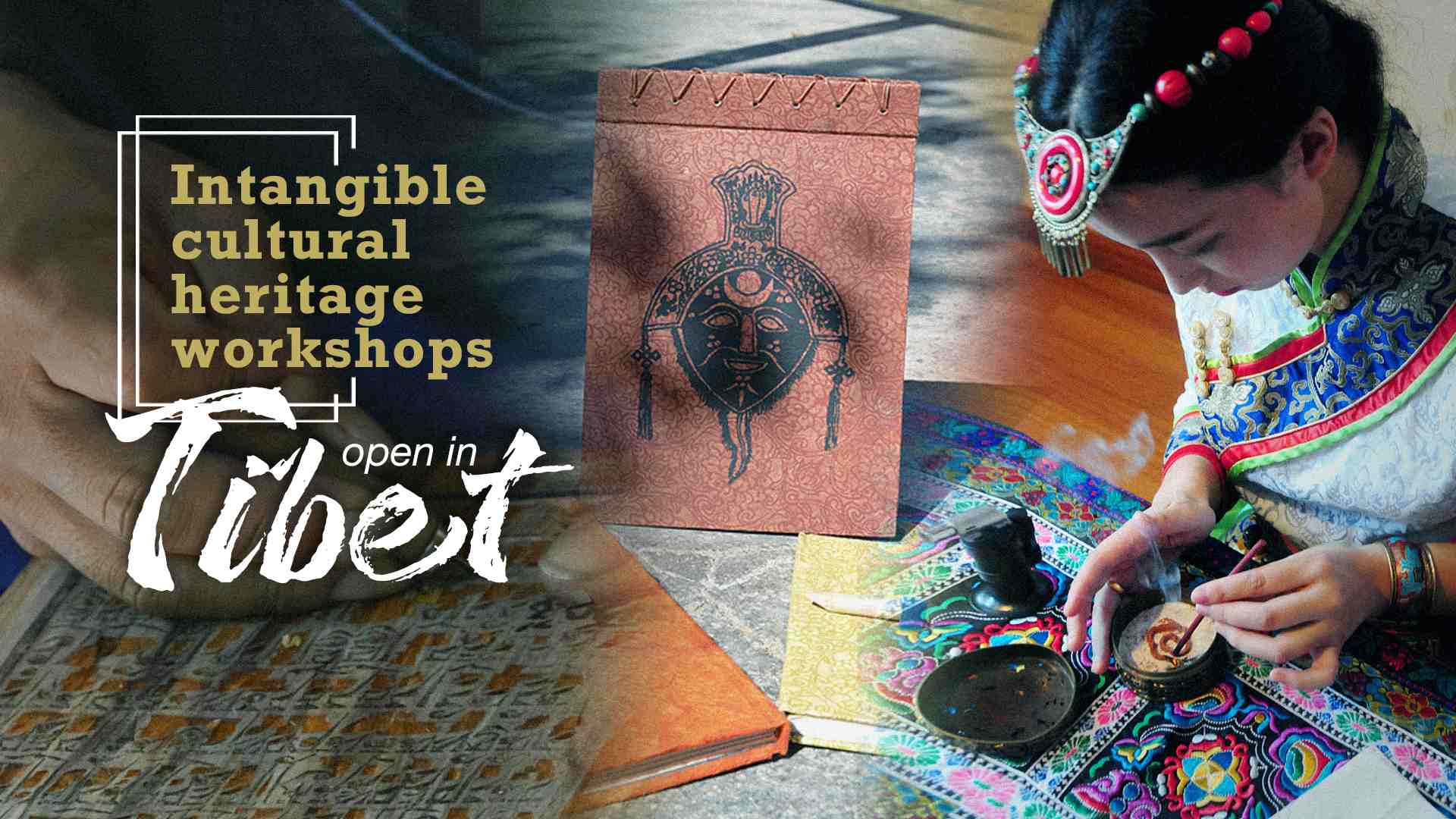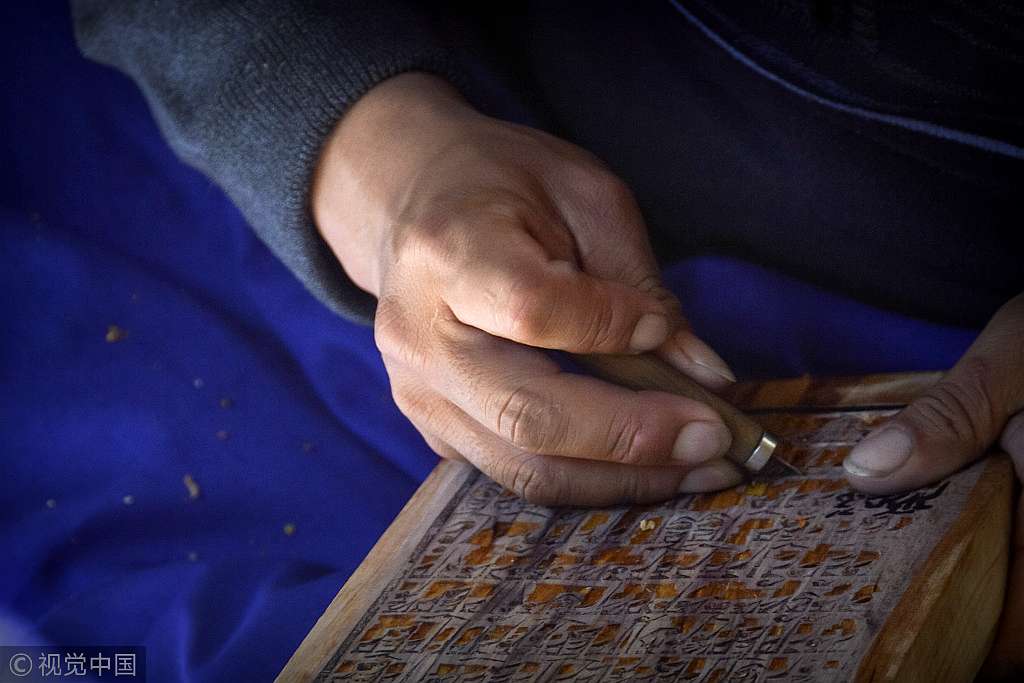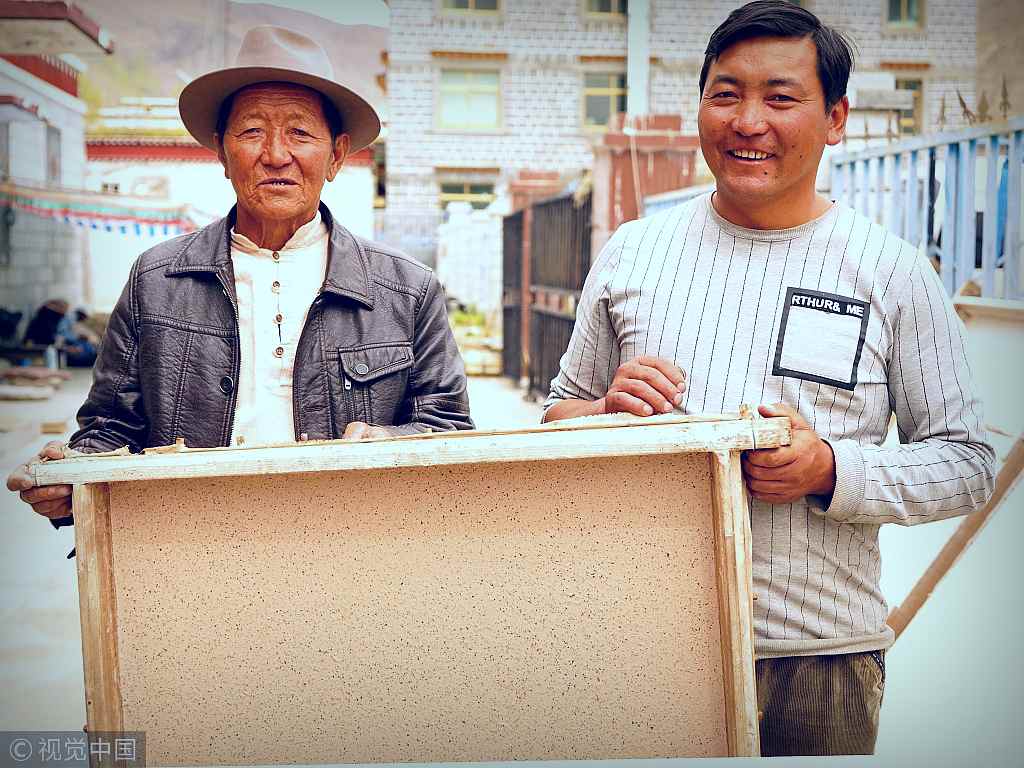
Culture China
17:31, 18-Mar-2019
First batch of intangible cultural heritage workshops opens in Tibet
Updated
18:11, 18-Mar-2019
By Hong Yaobin

The first batch of 10 intangible cultural heritage workshops opened on March 16 in Nyemo County, southwest China's Tibet Autonomous Region.
Since Tibetan medicinal bathing was inscribed on the Representative List of the Intangible Cultural Heritage of Humanity last year, China counts 40 intangible cultural heritage items ratified by UNESCO.
Additionally, China has launched its own list, the National List of Intangible Cultural Heritage, in 2006, including an ambitious 518 items in its first batch. The country has logged a total of 1,372 elements into its national list to date. Among them, 89 items are from Tibet.

Prayer flags flap on the lines at the Tibetan Museum for Intangible Cultural Heritage in Lhasa, southwest China's Tibet Autonomous Region, July 3, 2018. /VCG Photo
Prayer flags flap on the lines at the Tibetan Museum for Intangible Cultural Heritage in Lhasa, southwest China's Tibet Autonomous Region, July 3, 2018. /VCG Photo
After setting up the workshops, ethnic Tibetans who have been trying to eke out a living in poverty stricken areas will embrace a chance to make their way out by hand, seeking a better life through traditional Tibetan craftsmanship.
Local residents can learn some of the intangible cultural heritages, such as the fabrication of Tibetan incenses, papers, drums, woodcarvings, and Nyemo sutra streamers – colorful Buddhist prayer flags.
Last year, the Ministry of Culture and Tourism identified the first batch of 10 key support areas of "poverty alleviation via intangible cultural heritage" and planned to establish numerous intangible cultural heritage workshops there, aiming to revitalize local traditional crafts and promote poverty alleviation.

A craftsman demonstrating Pusum hand-engraving. /VCG Photo
A craftsman demonstrating Pusum hand-engraving. /VCG Photo
Nyemo County was inscribed into the list as it is home to about 10 items of intangible cultural heritage at all levels, including Nyemo handmade incenses, Pusum hand-engravings, and Xoleg papers, which are dubbed local "Three Treasures."
As part of the poverty alleviation program, the workshops are expected to provide more jobs and help local people shake off poverty.
Cultural training programs help tackle poverty
Basang is a member of the local co-operative group, which is specialized in making Xoleg paper – the Tibetan paper that was inscribed into China's national intangible cultural heritage in 2006.
He has been learning the skills from Cering Doje, a real master and inheritor of the handicraft, for three years.

Cering Doje (L) and his son show the procedures of making Xoleg papers in Lhasa, Tibet, southwest China, April 12, 2018. /VCG Photo
Cering Doje (L) and his son show the procedures of making Xoleg papers in Lhasa, Tibet, southwest China, April 12, 2018. /VCG Photo
Currently, Basang earns 3,000 yuan (447 U.S. dollars) a month and his family has achieved poverty relief thanks to his new skills. According to him, they have recently bought some new furniture and agricultural machines for making more profits and a better life.
"These workshops will not only introduce traditional handicrafts to Tibetan people but increase their incomes," said Long Zhigang, deputy head of the regional department of culture.
Tibet is rich in ethnic cultural treasures and religious spiritual wealth, possessing 89 state-level, 460 regional-level, and over 1,800 city and county-level intangible cultural heritage items.

The Tibetan Museum for Intangible Cultural Heritage - the world's highest-altitude intangible cultural heritage museum, is located in Lhasa, Tibet, southwest China, July 3, 2018. /VCG Photo
The Tibetan Museum for Intangible Cultural Heritage - the world's highest-altitude intangible cultural heritage museum, is located in Lhasa, Tibet, southwest China, July 3, 2018. /VCG Photo
China has spent 300 million yuan (about 44.8 million U.S. dollars) on protecting the intangible cultural heritage of Tibet Autonomous Region over the past 13 years.
In 2018, the government has earmarked one million yuan (about 150,000 U.S. dollars) for the project of "poverty alleviation via intangible cultural heritage" in Nyemo County.
According to the local government, a volunteer group of 25 inheritors of intangible cultural heritage at all levels from Nyemo County has been carrying out various training programs among the residents.
With 300,000 yuan (44,670 U.S. dollars) additional funding this year, more support will be given to the region to develop more relevant training and promotion activities.
(Cover image by Gao Hongmei)
Read more:

SITEMAP
Copyright © 2018 CGTN. Beijing ICP prepared NO.16065310-3
Copyright © 2018 CGTN. Beijing ICP prepared NO.16065310-3